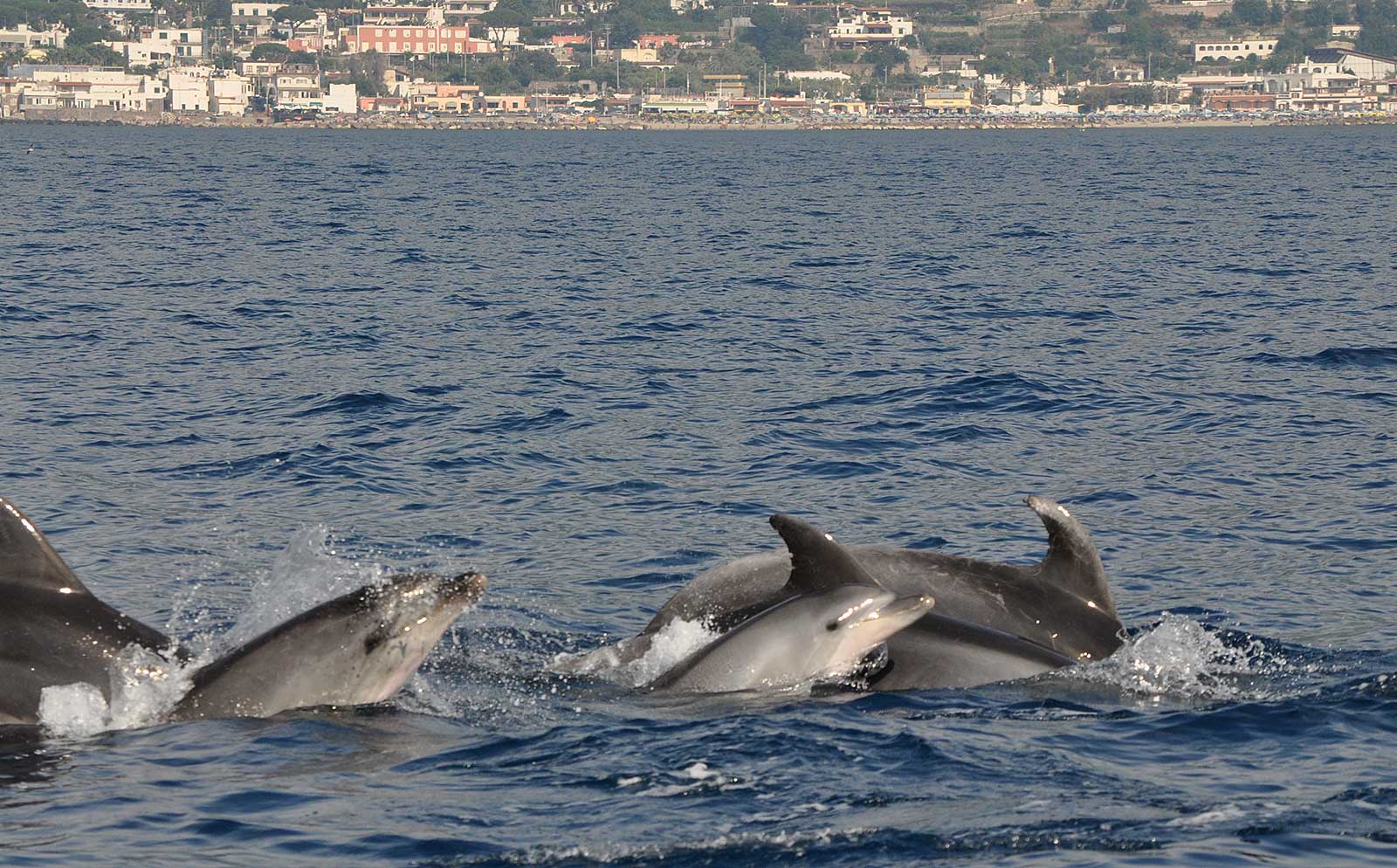Bottlenose dolphin
Kingdom: Animalia
Phylum: Chordata
Class: Mammalia
Order: Cetartiodactyla
Infraorder: Cetacea
Parvorder: Odontoceti
Family: Delphinidae
Genus: Tursiops
Species: Tursiops truncatus (Montagu 1821)

Description
The adult bottlenose dolphin reaches an average length of 3.8 meters and a weight of 350 kg. The female is slightly smaller than the male.
The body shape is more robust than other delphinids. Coloration is relatively nuanced and greatly variable between specimens. Generally, the back is gray, the flanks of a lighter gray that fade without a dividing line into the belly, which is whitish.

The bottlenose dolphin is found in all tropical and temperate waters, coastal areas (including lagoons, estuaries, and bays), and pelagic zones. In the Italian seas, the species is widespread everywhere.
It does not possess main food preferences, feeding on bluefish, mullet, squid, and sometimes benthos invertebrates.
Mediterranean Conservation Status
In 2021, the Mediterranean bottlenose dolphin subpopulation moved from the Vulnerable category to Least Concern on the IUCN Red List.

In the past, the bottlenose dolphin has experienced serious conservation problems in the Mediterranean Sea, where, due to past hunting (bottlenose dolphins were intentionally killed until the 1960s because they were thought to be harmful to fisheries), bycatch in fishing gear, and degradation of the marine environment, the population has declined.
Despite recent recovery, many other factors, such as overfishing of dolphin prey, disturbance of maritime traffic, and noise and chemical pollution, continue to impact the species and its environment.
Listed in
CMS App. II (North Sea, Baltic Sea, Mediterranean and Black Sea populations)
CITES App. II
Bern Convention App. II
Barcelona Convention, SPA/BD Protocol, Annex II
EU Habitats Directive:
Annex II, Annex IV
Global status
Least Concern
The local population
The data collected during our study show that, for the local population of bottlenose dolphins, the waters around the island of Ischia represent a feeding and breeding site and a suitable habitat to raise calves.
The groups are numerous, reaching over 100 individuals.
Juveniles and newborns are often present in the groups.

In the study area, bottlenose dolphins seem to prefer the summer period for breeding; in fact, the maximum number of newborns observed was recorded in July and August; lower, but equally significant, numbers were recorded in June and September.
Photo-identification analyses allowed us to catalog 204 individuals, including 44 females. Many animals return over the years, demonstrating fidelity to the site.

With few exceptions, bottlenose dolphins are mainly distributed in coastal waters, concentrating northwest of Ischia near the canyon of Punta Cornacchia.
Acoustics
The bottlenose dolphin is a highly social species that uses sound emission for feeding and socialization. The data so far analyzed covers the period 2013-2016. A total of 6099 whistles were selected for analysis.

Multiple comparisons were made to test how the combination of different factors (group size, group composition, behavior, boat presence, depth, and distance from shore) can influence whistle parameters. Preliminary results show that group size, group composition, and dolphin behavior are social factors that have a significant impact on whistle parameters.

